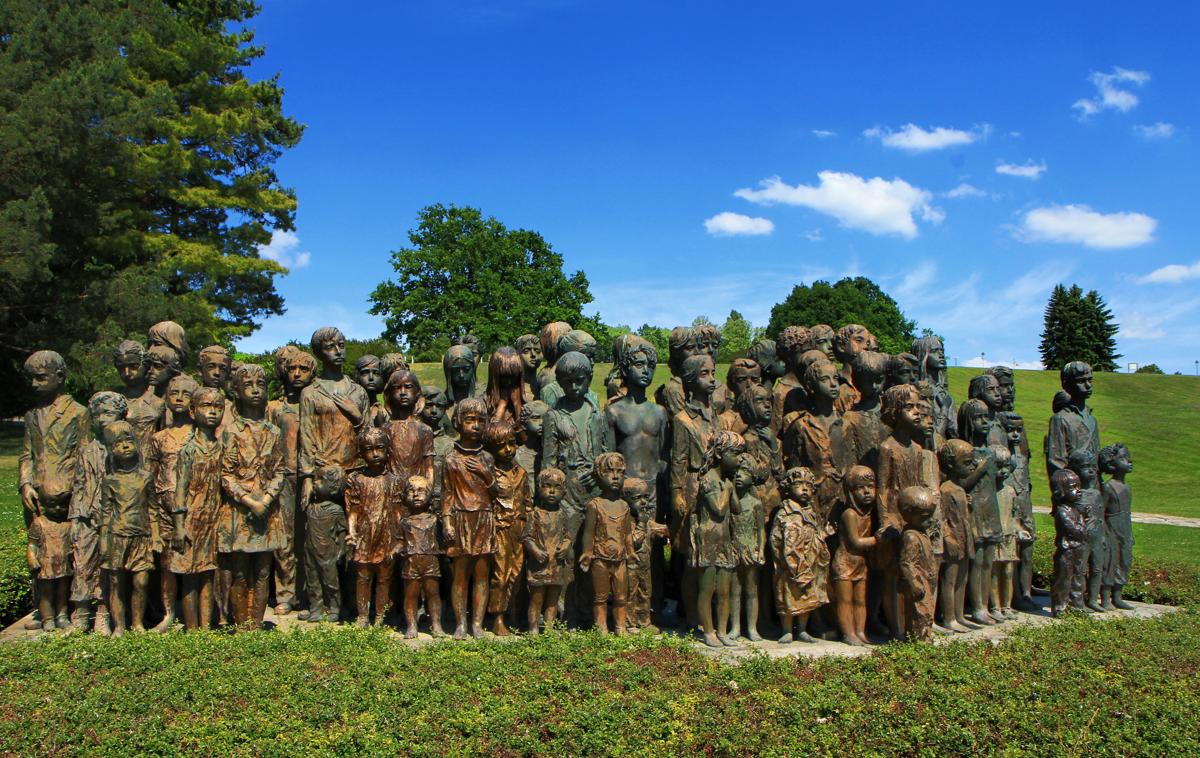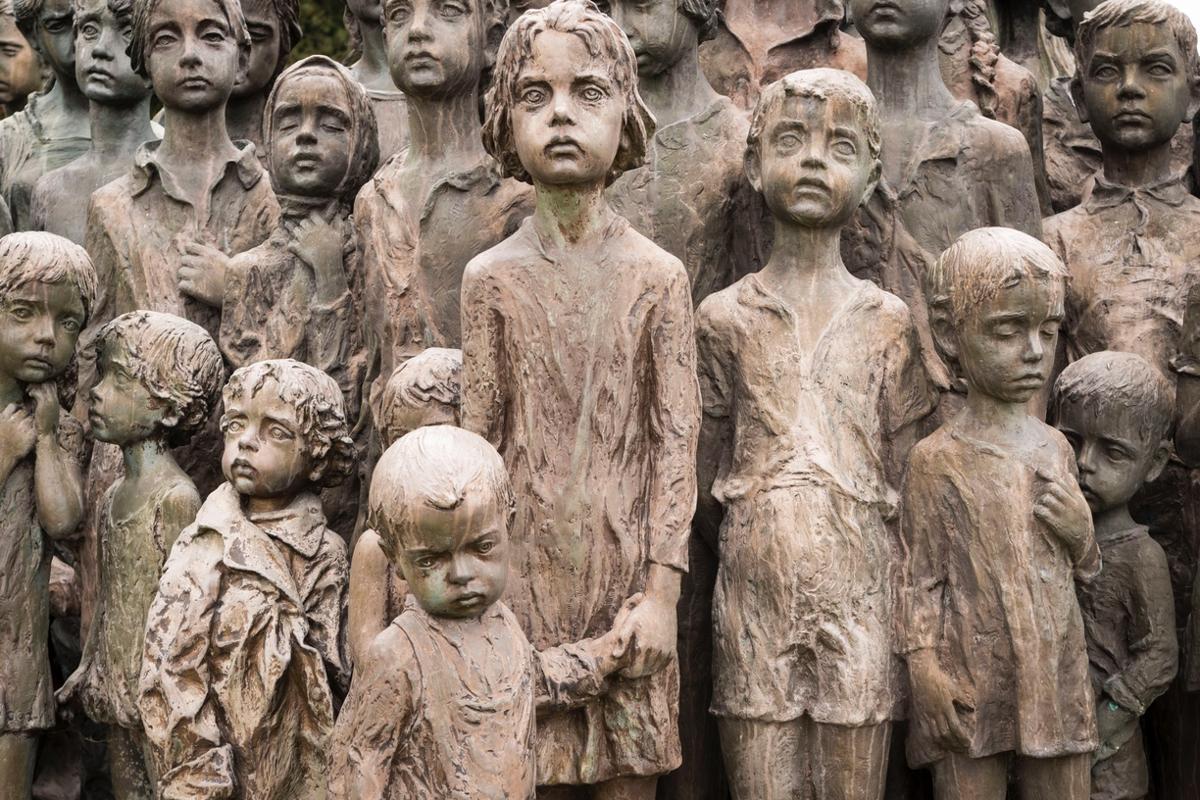April 9: Weep Not For Me But For These My Children
♫ Music:
WEEK SEVEN
April 9 - April 15
STATIONS OF THE CROSS (PART II)
HOLY WEEK
As we continue reflecting on the Passion of Christ this week, we acknowledge the wisdom of the early church in annually reliving and fully entering into the narrative of Christ’s sacrifice. Putting ourselves in the middle of the “greatest story ever told” strengthens our faith by drawing us closer to our Savior, compelling us to go ever deeper with him. In the Last Sin Eater, novelist Francine Rivers writes, “It was the Lord speaking to us all and showing us over and over again the birth, life, death, and resurrection of his only begotten Son, our Savior, Jesus Christ, our Lord. It was like a best-loved story being told day after day with each sunrise and sunset, year after year with the seasons, down through the ages since time began.” Author John Piper writes,“Life is wasted if we do not grasp the glory of the cross, cherish it for the treasure that it is, and cleave to it as the highest price of every pleasure and the deepest comfort in every pain. What was once foolishness to us—a crucified God—must become our wisdom and our power and our only boast in this world.”
Day 40 - Sunday, April 9
Jesus Meets the Pious Women of Jerusalem
Scripture: Luke 23:28-31
But turning to them Jesus said, “Daughters of Jerusalem, do not wail and lament for me, but weep for yourselves and for your children. For behold, the days are coming when they will say, ‘Blessed are the barren and the wombs that never bore and the breasts that never nursed!’ Then they will begin to say to the mountains, ‘Fall on us,’ and to the hills, ‘Cover us.’ For if they do these things when the wood is green, what will happen when it is dry?”
Poetry:
"Good Friday"
by Christina Rossetti
Am I a stone, and not a sheep,
That I can stand, O Christ, beneath Thy cross,
To number drop by drop Thy blood’s slow loss,
And yet not weep?
Not so those women loved
Who with exceeding grief lamented Thee;
Not so fallen Peter weeping bitterly;
Not so the thief was moved;
Not so the Sun and Moon
Which hid their faces in a starless sky,
A horror of great darkness at broad noon –
I, only I.
Yet give not o’er,
But seek Thy sheep, true Shepherd of the flock;
Greater than Moses, turn and look once more
And smite a rock.
WEEP NOT FOR ME BUT FOR THESE MY CHILDREN
Adolph Hitler was bloody mad, the underground resistance had assassinated his chief Czechoslovakian henchman, Reinhard Heydrich. In retaliation the Führer ordered the tiny town of Lidice to be razed. The Gestapo had intercepted a suspicious letter from one of the village families, which ultimately resulted in the deaths of an estimated 1,300 innocent people. On June 9, 1942, security police rounded up the men of Lidice and shot them at the edge of the hamlet. In the days following, the women of Lidice were separated from their children and sent to Ravensbruck Concentration Camp where only a few survived. Many of the village children went to the extermination camp at Chelmo in Poland where they were immediately gassed to death. Lidice buildings were blown up and then bulldozed. Trees were uprooted, the lake filled in and the entire area flattened. All these atrocities were committed to avenge the death of one Nazi officer.
In the 1950s the village of Lidice was reestablished not far from its original site. Near the new town, The Garden of Peace was opened in 1955 with 29 thousand rose plants--gifts from 32 nations. The focal point of the garden is our artwork for today, the Children’s War Victim’s Monument, a thirty-year project, completed in 2000. It took sculptor Marie Uchytilova 20 years just to fashion the plaster figures and when she suddenly died in 1989, her husband Jiri Hampl saw to it that the laborious work was finally cast in bronze and installed. Uchytilova once said, “In all languages of the world, my statues speak silently, which I do for your children.” Indeed, the Children’s War Victim’s Monument functions symbolically as a memorial to all children who have lost their young lives at the expense of others sins.
On the road to Calvary, Christ encountered grief stricken female followers. He turned to them with pity saying, “Wail and lament not for me but for yourselves and for your children. For behold, the days are coming when they will say, ‘Blessed are the barren and the wombs that never bore and the breasts that never nursed!’” The initial reading of this prophecy references the decimation of Jerusalem in 70 AD. But by extension, we understand Christ’s words to be inclusive of all those in ensuing generations who have been and continue to be voiceless, innocent victims. Their plight in today’s world is particularly disturbing. When would it be "blessed" to be barren and childless? Clearly when conditions are so horrific and hopeless that death is preferable to life. Take a look at the following statistics:
1.4 billion of the world’s families live on less than $1.25 a day. (World Vision)
132 million children are in need of a new family, shelter, or more adequate care.
Many of these children are abandoned and fend for themselves. (UNICEF)
50 million children are classified as refugees or migrants. (UNICEF)
40-50 million children are annually aborted worldwide. (WHO)
20 million people, many of them children, currently face man-made starvation in 4 African nations--the largest humanitarian crisis since 1945. (UNICEF)
13 million children are two parent orphans. (UNICEF)
6 million children under the age of 5 die each year. (WHE)
3.1 million children die each year from hunger. (WHE)
2 million children are annually subjected to prostitution in the global sex trade. (UNICEF)
10’s of thousands of young boys and girls are forced by rebel groups to become child soldiers or gang members. (Purpose Collective)
"Wail and lament not for me but for your children." I sometimes wonder if Western Christendom knows how to mourn for the extreme suffering taking place in the world right now? It seems that most of us want to be as far removed from third world pain as possible. What would happen if the Christian Church started having prayer meetings especially for victimized children and their families? I was heartened to learn of a large Hispanic church in Southern California who on a weekly basis does just that. A friend of mine visited their four-hour Sunday afternoon service several weeks ago. He described a congregation that weeps and travails in earnest prayer for the plight of those around the globe. British humanitarian, Baroness Caroline Cox, an advocate for suffering Christians, insists that one of the most effective things believers can do is to pray. Cox says, "One of the things that always humbles those of us who are with the persecuted church is that they may be dying of disease and have no medicine, they may be hungry and have no food, but their first request is always for prayer. Surely all of us can give that."
Furthermore, the Baroness encourages Western Christians to “complement prayer with commitment.” There are many ways followers of Christ can get involved including setting aside a portion of their giving for the desperate needs of the third world. Richard Stearns, President of World Vision, says, "Solving the causes of poverty requires both large-scale, top-down action and the compassion and social activism of the church. Ending systematic poverty is possible if individual Christians respond and if the whole church exercises its massive resources and voice.”
Baroness Cox feels that the third-world persecuted church will be the spiritual salvation of the West. On a trip to a refugee camp in Southern Sudan she witnessed the arrival of “tens of thousands who had been driven off their land. It was the rainy season; they were covered with mud. They had no shelter, no medicines; many were naked. Suddenly, we heard the sound of joyful singing from three different directions simultaneously. It was the wonderful sound of psalms and hymns. Three branches of the church were coming in three processions: Episcopalians, Presbyterians and Catholics.They made a huge circle and we worshiped together. They had nothing, and yet there was radiance in their faces. Don’t forget them.”
"Weep not for me but for these my children."
PRAYER
O Heavenly Father, today we groan in our spirits for all the children and their families who are suffering around the world. Why is it that some have so much while others have so little? Have compassion on the millions who live in poverty and hunger; relieve their distress; make plain the way of help; and grant your grace unto us all, that we may bear each others’ burdens according to your will, through Jesus Christ our Lord.
Amen.
(adapted from George Appleton)
Barry Krammes
CCCA Staff
Artwork:
The Children’s War Victims Monument (6 views)
Marie Uchytilová-Ku?ová
Bronze sculpture
Garden of Peace, Lidice, Czech Republic
About the Artist:
Marie Uchytilová (1924-1989) was a professor of sculpture at the School of the Arts in Prague. In the late 1960s, Uchytilová began working on the monumental Memorial to the Children of Lidice. The memorial depicts 82 children who were killed by the Nazis during World War II in the extermination camp of the Polish town of Che?mno. Uchytilová deliberately decided not to create faithful portraits of the children as she intended the work to be a monument to all child victims of war horrors. After she died in 1989, her work remained unrealized until the mid-1990s when the Danish city of Albertslund, and other foreign investors, donated the money needed to cast the sculpture in bronze. The first thirty statues were installed in Lidice in 1995, and the last were installed in June 2000, thirty years after the beginning of her work and eleven years after the death of the creator. The sculpture is oriented so that the children face the graves of their fathers, grandfathers, and friends. In 2013, the Czech President Miloš Zeman called it "the most beautiful and saddest memorial I've ever seen" and gave the sculptor a state award in memoriam.
About the Music:
“Lament for the Children”
The purely instrumental lament is a common form of Scottish Highland music for the bagpipes.
About the Composer:
“Cumha na Cloine” (Lament for the Children) was composed by Padruig Mòr MacCrimmon in the early 1650s. It is generally held to be based on the loss of seven of MacCrimmon's eight sons to an unknown illness, possibly brought to Isle of Skye by a trading vessel. Author Bridget MacKenzie, in Piping Traditions of Argyll, suggests that it also refers to the slaughter of the MacLeod's fighting Cromwell's forces at the Battle of Worcester in 1651.
About the Performer:
Jimi McRae (b. 1966) also known as “Jimi the Piper” is a Scottish bagpiper and legendary busker. Having recorded six studio albums, McRae blends the traditional and contemporary, the exuberant and in this case, the haunting.
http://www.jimithepiper.co.uk/
About the Poet:
Christina Rossetti (1830-1894) was a Victorian poet who is known for her simple, lyrical work. She published poems in the periodicals The English Woman’s Journal and Victoria Magazine, and in various anthologies. Christina Rossetti has often been called the greatest Victorian woman poet. Today her poetry is regarded as some of the most beautiful and innovative of the period.





.jpg)